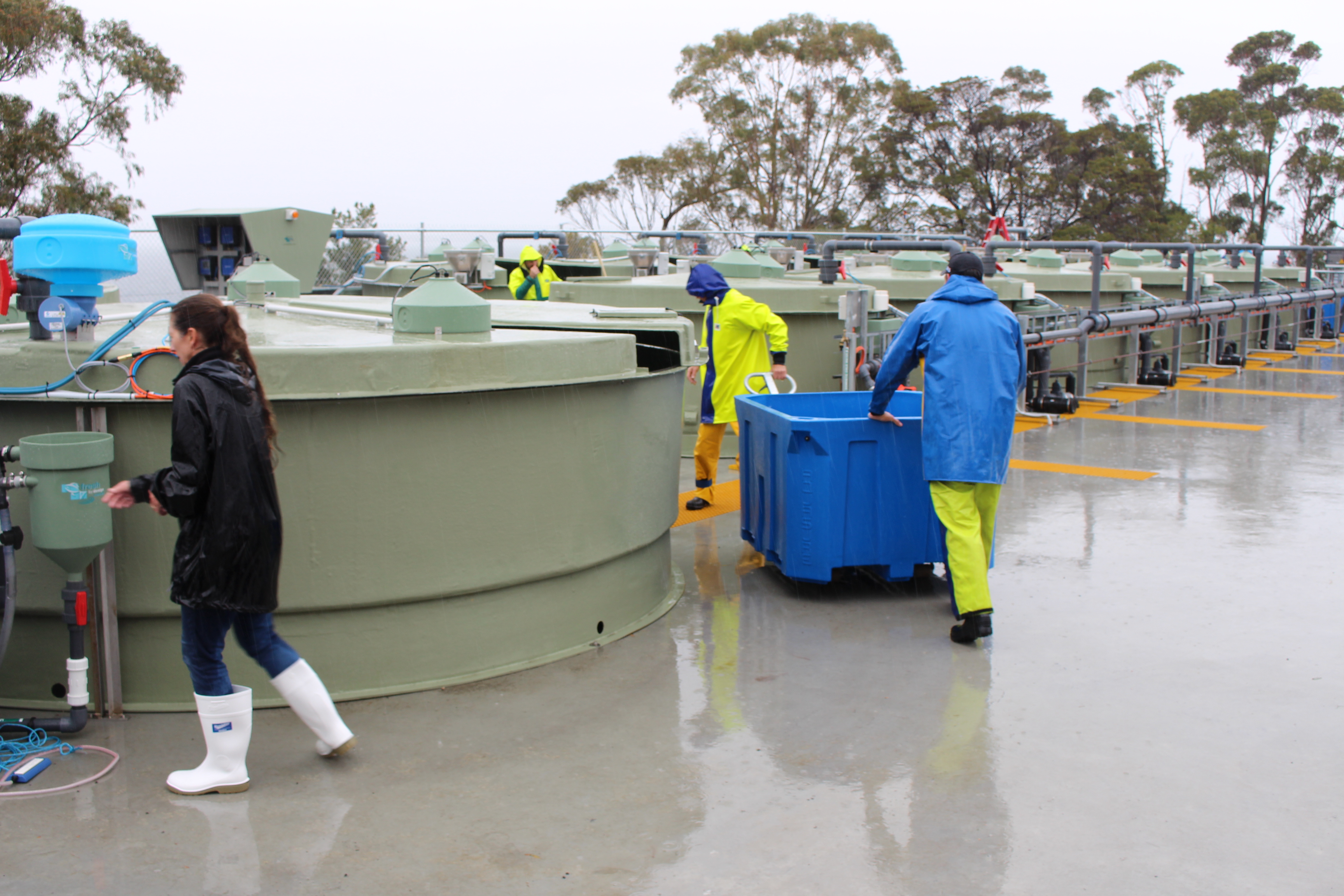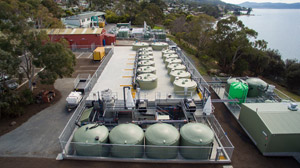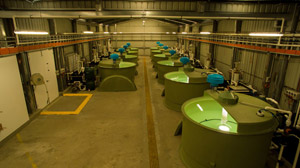Experimental Aquaculture Facility
 In partnership with Huon Aquaculture, Skretting, the University of Tasmania's Institute for Marine and Antarctic Studies, and the Tasmanian and Australian Governments, the Experimental Aquaculture Facility (EAF) was opened in October, 2015.
In partnership with Huon Aquaculture, Skretting, the University of Tasmania's Institute for Marine and Antarctic Studies, and the Tasmanian and Australian Governments, the Experimental Aquaculture Facility (EAF) was opened in October, 2015.
Located at IMAS's Taroona fisheries and aquaculture research centre, the EAF is the first of its kind in the Southern Hemisphere.
It features recirculation aquaculture systems, 12 tanks of 7000 litres, 12 tanks of 2500 litres and two stock tanks of 13 000 litres.
A modern Experimental Aquaculture Facility (EAF) for directed, commercially-relevant research, is fundamental to ensure the economic and environmental sustainability of these important industries for Tasmania, Australia and internationally – now and into the future.
The EAF is:
- advancing understanding of Tasmania’s aquaculture industries by addressing issues of animal physiology, genetics, health, nutrition, welfare and production, environmental management, food safety and climate change impacts
- facilitating the economic, social and environmental sustainability of Tasmania’s aquatic based resource industries, increasing research, innovation and service capacity in coastal communities
- enabling production, health and environmental research to co-exist, enhancing collaboration and facilitating more innovative research over a broad range of issues and potential problems, hence meeting the industry’s strategic needs and agenda
- providing a hub to enable the University and industry to focus its efforts, and build regional and national seafood research and innovation capacity
- providing new specialist research capabilities to support the growth and sustainability of aquaculture in Tasmania, specifically the salmon and oyster sectors, as well as climate research capabilities for both the fisheries and aquaculture sectors


Need
The primary purpose of the EAF is to provide specialist research facilities to support the growth and sustainability of the salmonid industry. The EAF is seen as a key plank in Industry’s strategic future, providing a research capability that will underpin growth, sustainability and the ability to adapt to a changing environment of increasing sea water temperatures. Although the University has been able to provide research through existing facilities, a dedicated facility and increased tank capacity is required where the environmental characteristics can be controlled (e.g. temperature), and research can be done on larger fish (e.g. nutrition).
For salmonids this capability will accelerate the economic and environmental benefits through:
- Furthering research into Amoebic Gill Disease management
- Reducing the environmental impact of salmonid farming
- Reducing the fish losses due to high sea water temperatures
- Maintaining size of fish during extreme high temperatures.


